In the early spring of 2024, I had some work in Kragujevac, Serbia. I knew I would have time to explore the cultural landmarks in the city in the coming days, so I left that for later. However, I took advantage of the fact that I was travelling by my own car, so at the very beginning, I first visited several cultural monuments located near the fourth-largest city in Serbia by population (after Belgrade, Novi Sad and Niš) (based on data from the 2022 Census). I toured them just as is fitting when it comes to this city - I went just like rain, around Kragujevac. This is a reference to a popular saying in Serbian.
Namely, the phrase “to go like rain around Kragujevac” is used as a synonym for avoiding, procrastinating, etc. In other words, it is the Serbian equivalent of “to beat around the bush.” It is unclear how the phrase originated, although it is believed that at one time, a farmer was unhappy with how much rain fell on his field, thinking it rained everywhere except for his piece of land which happened to be in Kragujevac. Science, on the other hand, claims there is no basis for such a belief. From another perspective, I’ve also heard from very educated people from Kragujevac that it does happen sometimes that dark, rainy clouds head towards Kragujevac, but occasionally the winds divert them elsewhere, towards the Velika Morava river.
Be as it may, on the first day of my tour around Kragujevac, there was no rain in the city or its surroundings, although there were occasional clouds.
Here is a geographical map showing the places, sites and cultural landmarks I visited, but it doesn't indicate the order in which I visited them because I don’t think that is particularly important. Everyone can visit what they like, in whatever order they choose.
Since I travelled from Belgrade to Kragujevac first by motorway towards Niš and then turned towards Batočina and further towards Kragujevac, the first destination was actually along the way. Moreover, it was two specific locations at the same place, although not developed as tourist spots. But that usually doesn’t bother me. In fact, I can even say I enjoy visiting such sites because I find it interesting to see and document their condition.
So, first, I went to Jerinin grad (Jerina’s Town), located atop a hill called Jerinino brdo (Jerina’s hill). It is an archaeological site with remains of a medieval fortress, while the research has found artefacts dating back to the late antiquity period.
There is a local road around the hill (which, as I’ve heard, used to be the main road in this area long ago) and to get here, one needs to take a detour from the main road to Kragujevac in Batočina. The road around the hill eventually dead-ends and I drove there and got out of the car, knowing practically that I wouldn’t climb all the way to the top.
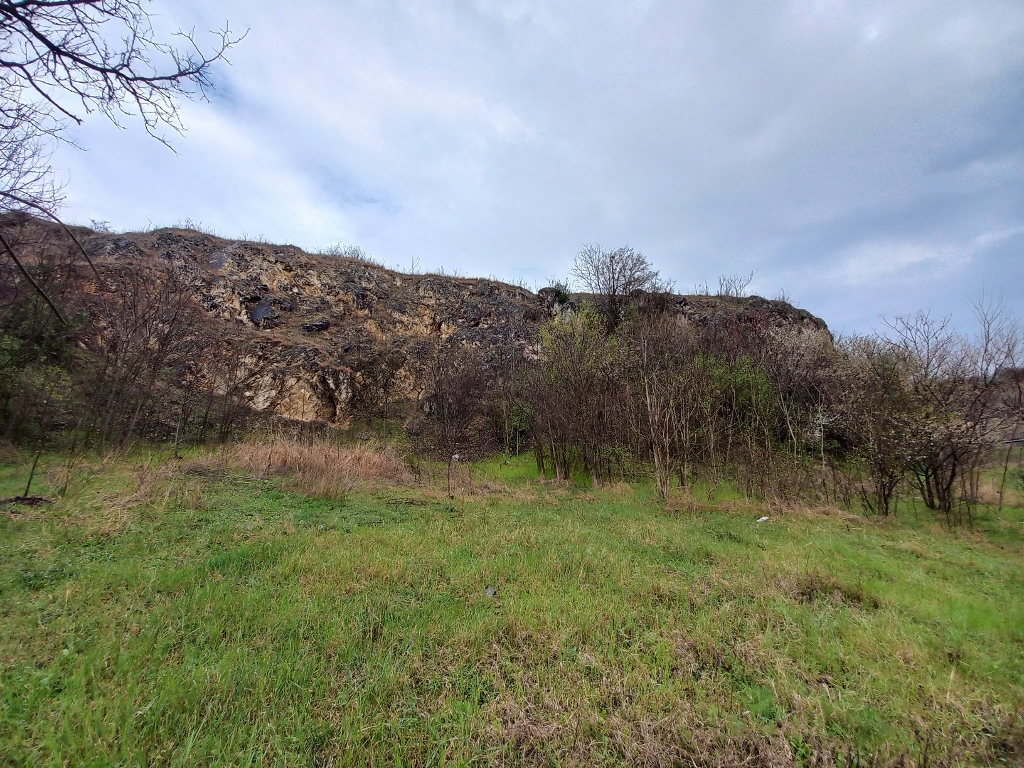 Jerinino brdo
Jerinino brdo
To clarify further, the hill is relatively steep and there are no maintained paths, not even the site itself is developed, as only excavations were previously conducted there. Moreover, during the construction of the modern road from Batočina to Kragujevac, the hill was “cut” and separated from the elevation on the southern side, which allowed for a more normal approach to the top. However, the hill is located right next to the Lepenica River, which flows to the north, and it dominates the valley in this area, explaining the construction of the town at the top of the elevation. From what I’ve heard, the foundations of a church and various other buildings from the medieval period have been discovered there and the site spans a few hectares, making it one of the largest in this part of Serbia.
Although I didn’t climb to the top and don’t have photos of the site itself, let me explain a bit about the names of the hill and the town – Jerina’s Hill and Jerina’s Town – since both of these names can be found in literature and on the internet.
As with about a dozen other old towns or ruins of unknown origin scattered throughout Serbia, over time, people here also named it after Jerina Branković (born as Irene Kantakouzene) (c. 1400 – 3 May, 1457), the wife of Despot Đurađ Branković (b/r. 1377/1427-1456). After her husband’s death, she ruled Serbia as a despotess-regent, but very briefly, as she passed away a year later – some say peacefully, as a nun at a monastery on Mount Rudnik, while others claim she was poisoned by her son Lazar in order for him to seize power.
In any case, she is remembered in folk memory as unpopular to the extent that she was dubbed “Cursed/Damned Jerina.” This was largely due to the construction of the city of Smederevo (see: https://www.svudapodji.com/en/serbia-2006-3/), which was the capital of the Serbian state at that time. The construction began in 1428 and lasted for 11 years, with the people being forced to work under high taxes, following the designs of Greek architects and under the supervision of a Greek army led by Jerina’s brother. All of this contributed to the creation of memories of the despotess as a very harsh woman, who certainly had a very strong influence on her husband. Incidentally, the construction of Smederevo did not help much because the Ottomans eventually captured it in 1459, just a few years after the despot's and his wife’s death.
I would also like to add that over time, folk imagination even embellished the stories about Cursed Jerina by adding that she used to throw her lovers into the wells within the walls of the city of Smederevo or that she threw children from high towers.
I mean, rightfully or not, she is certainly the most unpopular woman in Serbian history.
But let me get back to the story about the elevation and its settlement. The advantageous position of the elevation wasn’t “discovered” only in the Middle Ages; human settlements existed here since the Palaeolithic era, through the Neolithic, Antiquity and, finally, into the late Middle Ages.
So, within the interior of the hill, there is a cave that was inhabited by Homo sapiens during the Palaeolithic era, around 26,000 years BCE. Known as the Gradac Cave, it is located at the foot of the hill and faces the Lepenica River. Classified as a significant archaeological site, it is designated as immovable cultural property of great importance.
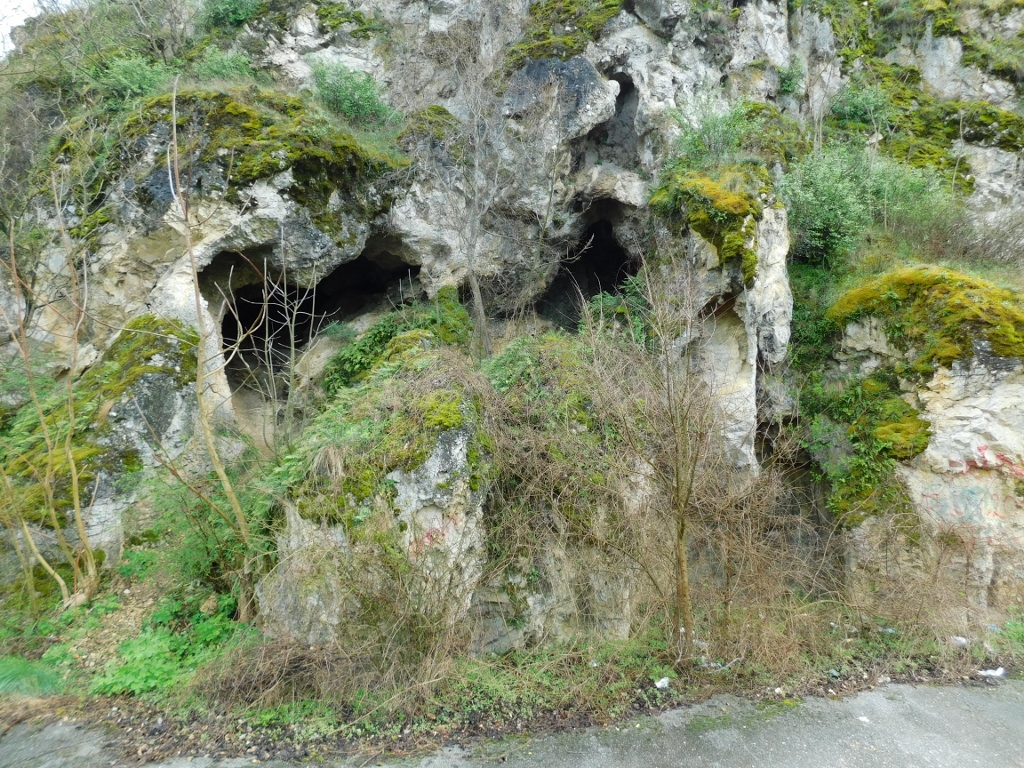 Gradac Cave
Gradac Cave
The first significant research here was conducted back in the mid-20th century, during which many interesting artefacts were found. However, due to lack of funding, the cave was later only conserved and left as it was. From what I’ve read, there are ideas and plans to adapt the cave to modern needs related to tourist visits.
I didn’t explore it or venture inside, but I did climb a bit from the road and just peeked in.
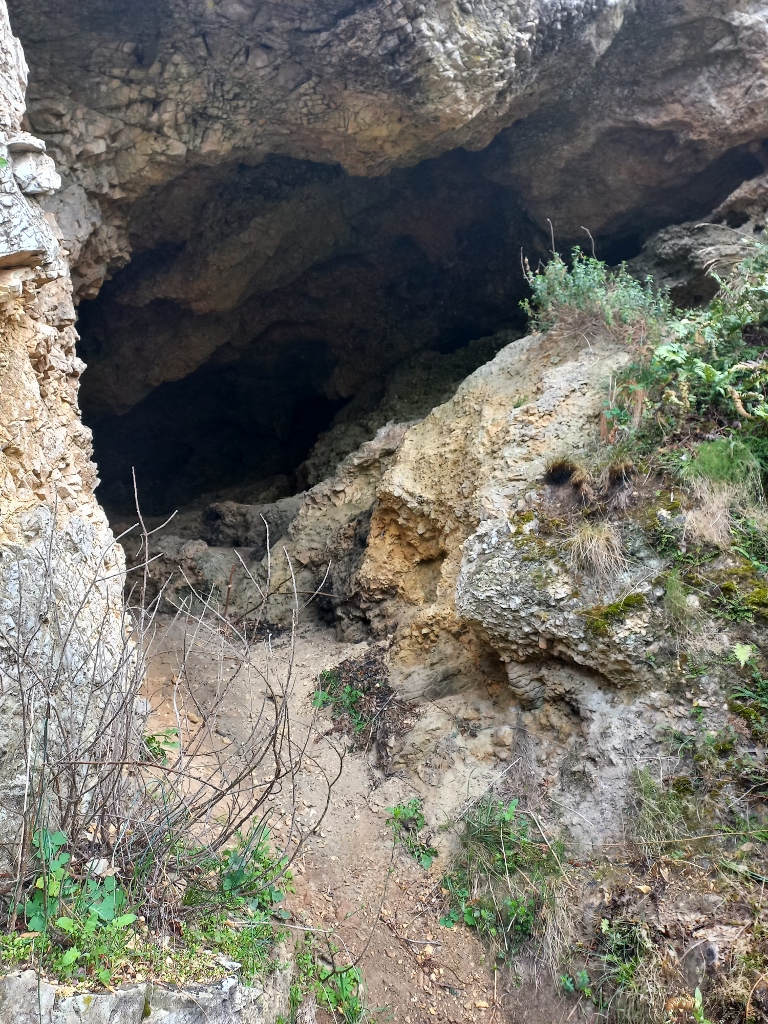 Gradac Cave
Gradac Cave
After that, I drove to the village of Prnjavor, where the Grnčarica Monastery, considered a cultural monument, is located.
 Grnčarica Monastery
Grnčarica Monastery
Based on the preserved fragments of the original frescoes, the monastery is believed to have been built in the mid-16th century. However, over time, during various conflicts, especially in the 18th century, it was repeatedly burned and destroyed. It was also rebuilt several times, but major renovations occurred in 1869 when the church that stands today, dedicated to St. Nicholas, was erected, along with a dormitory.
When I entered the monastery, the nuns noticed that I had a camera around my neck, so they kindly asked me not to take photos inside the church. Therefore, I only have a picture I took from the elevation and from the other side of the stone wall that surrounds the entire complex.
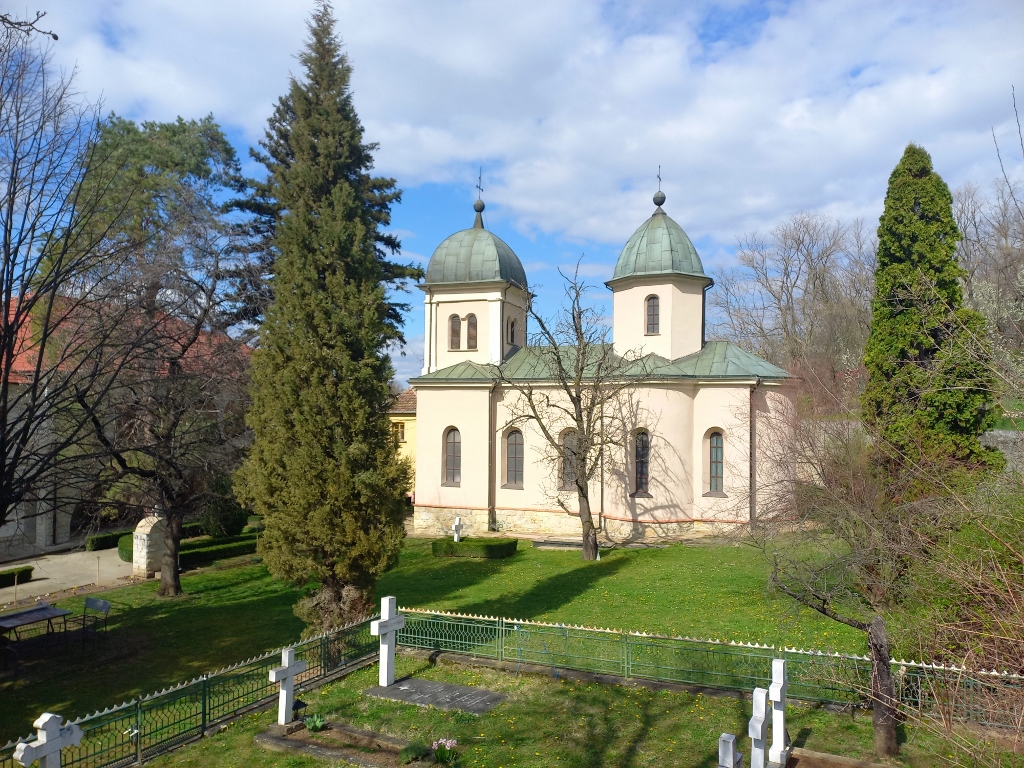 Grnčarica Monastery
Grnčarica Monastery
As it may be seen from the photograph, the church has a trefoil plan, with a tall octagonal dome above the central space and a square bell tower with mullioned windows on each side which is of the same height as the central dome.
I entered the church and briefly visited it before continuing further.
When entering Kragujevac from the main road coming from Batočina, somewhere on the right-hand side, there is an archaeological site called “Todorčevo - Strna Žita.” Here, remains of three settlements have been discovered, practically built on top of each other. The first dates back to the older Neolithic period (Starčevo Culture), around 6000 BCE, the second to the 10th century BCE or the earlier Iron Age, and the third settlement dates back to the Roman civilisation period, around the 3rd and 4th centuries CE. The research from the late 20th century confirmed all of this based on findings.
However, I didn’t even attempt to determine the exact location of this place. The reason for this is that I now have enough experience with undeveloped archaeological sites – they do exist, but after research, they are usually conserved and most often fields or meadows are restored above them, so nothing can be seen from the surface. Also, there are usually no signs or markers, so I always remain uncertain if I was in the right place.
In other words, I didn’t visit this place or even attempt to enter the city. Instead, I continued from the Grnčarica Monastery and headed towards the village of Lužnice, located about 16 km northwest of Kragujevac.
The reason for this is that Lužnice is home to a monument of culture of exceptional importance – the sobrašice.
However, before delving into the sobrašice, let me say that I was genuinely surprised when I saw the building that houses the local post office in Lužnice, a village that now has about 1000 residents.
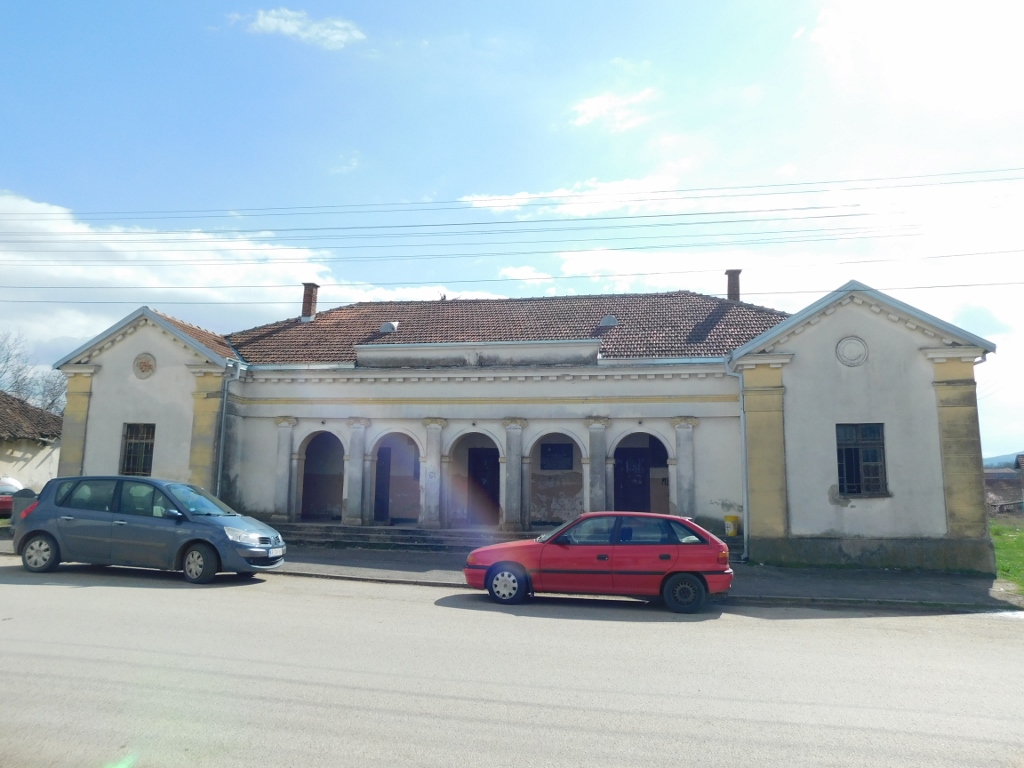 Lužnice, a detail
Lužnice, a detail
I couldn’t find anything related to this building either, but although it is in quite a sloppy condition from the front (from what I saw, the entrance to the post office is from the side), I was truly impressed by some architectural elements visible on the façade. Someone really put in effort to enrich the relatively small village with an impressive structure.
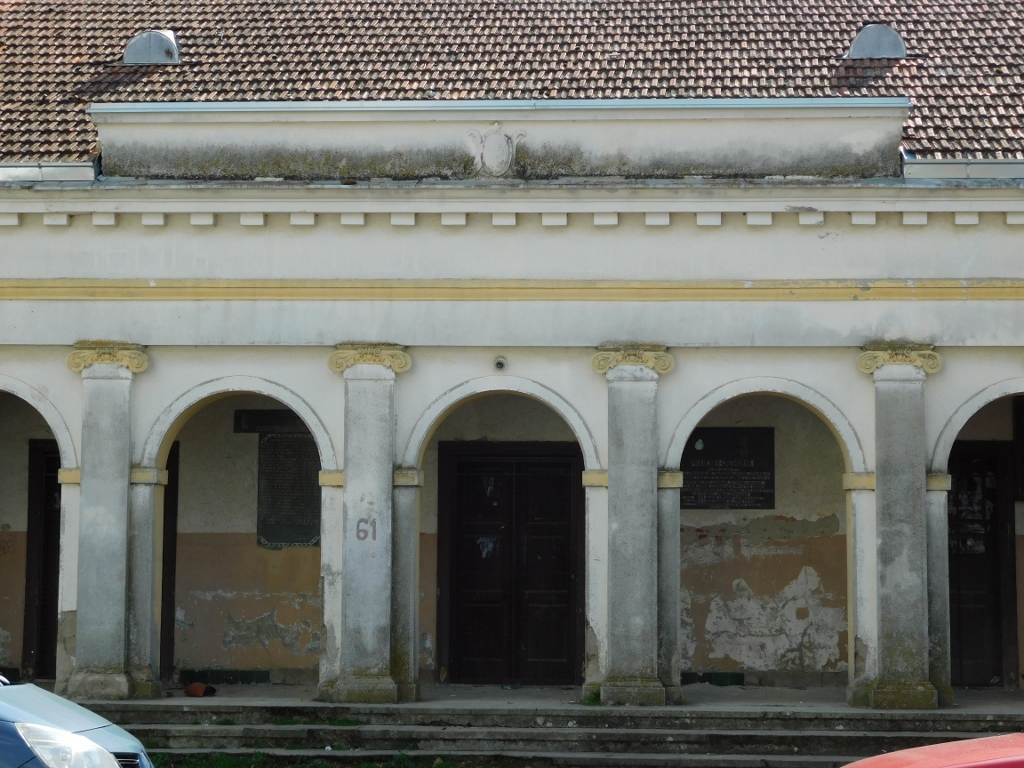 Lužnice, a detail
Lužnice, a detail
So, I first went to see what was behind the walls of the porch and there I found a couple of plaques dedicated to the Partisans who died in World War II.
But, as I’ve mentioned, the main reason for my visit to Lužnice was the church and its yard located directly opposite the building housing the local post office. There, you can see impressive sobrašice or trpezari (dining halls).
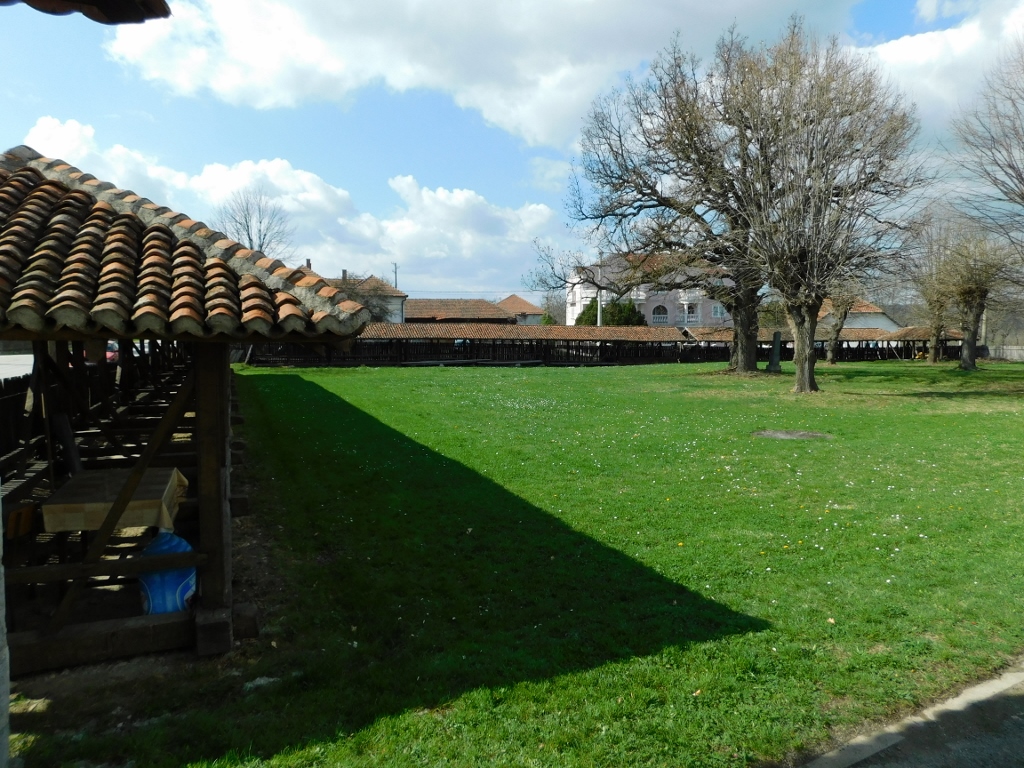 Sobrašice in Lužnice
Sobrašice in Lužnice
Sobrašice or trpezari are structures that were built in Serbia in the 19th century in the immediate vicinity of churches or monasteries. Their function was to serve as dining halls for the gatherings of people (hence “sobrašice” from the word “sabor” meaning assembly), local families and their friends, during the celebration of various church holidays, assemblies and festivities. Today, there are not many of them that have survived, which is why they are considered extremely significant cultural monuments. Here in Lužnice, there are more of them, as many as 27, and they are relatively well-preserved, while they were all built in the second half of the 19th century.
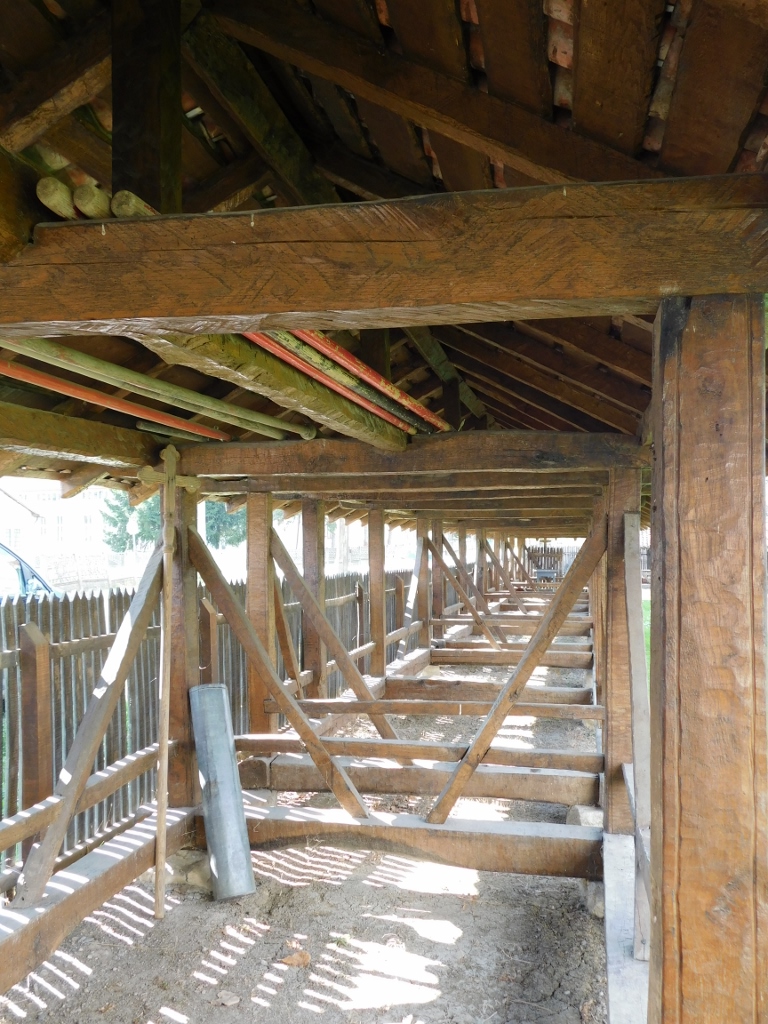 Sobrašice in Lužnice, a detail
Sobrašice in Lužnice, a detail
Sobrašice are of a very simple design – they have a rectangular plan, a low stone foundation and a roof with two or four slopes. They are typically built in the half-timbre style.
What particularly distinguishes the sobrašice in Lužnice is the absence of walls, while massive wooden beams and supporting pillars are placed on larger stones positioned at the corners.
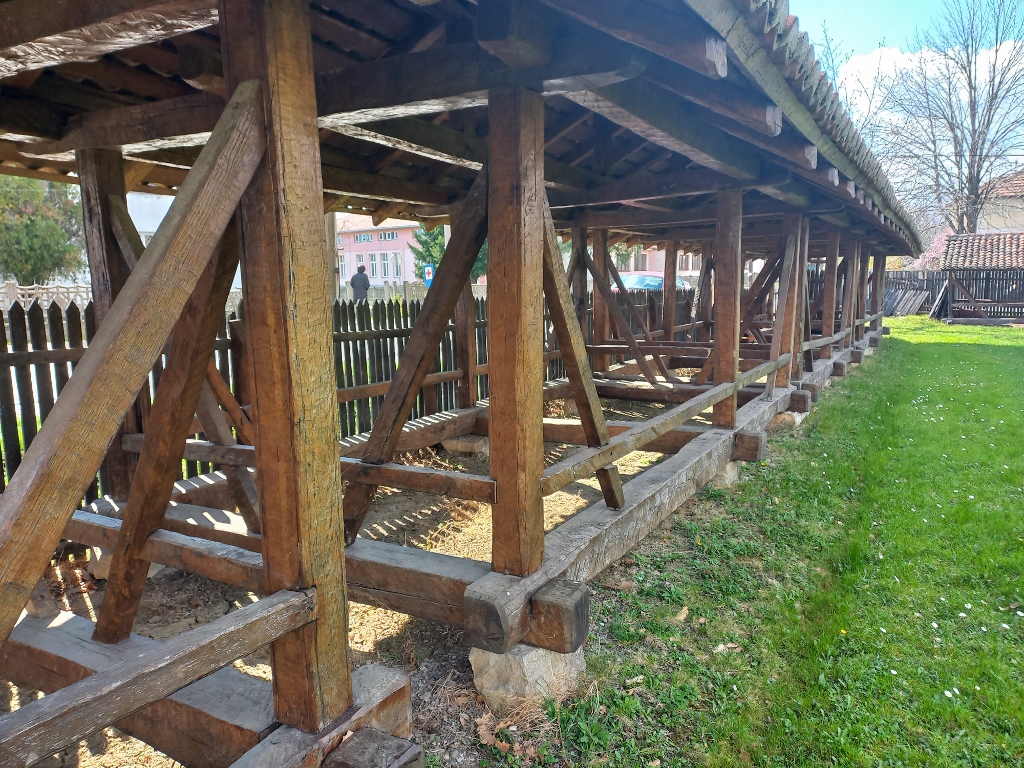 Sobrašice in Lužnice, a detail
Sobrašice in Lužnice, a detail
Sobrašice can be individual (like a single dining hall), but those in Lužnice are grouped in a row and covered by a common roof with Monk and Nun roof tiles. They are arranged around the perimeter of the church courtyard.
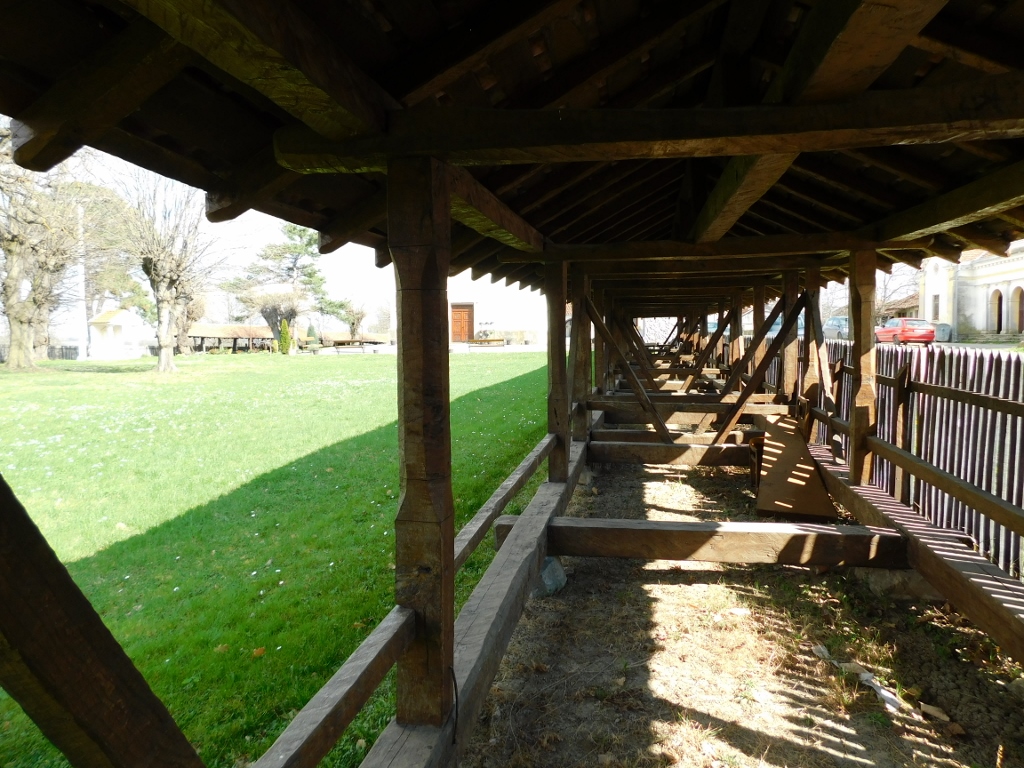 Sobrašice in Lužnice, a detail
Sobrašice in Lužnice, a detail
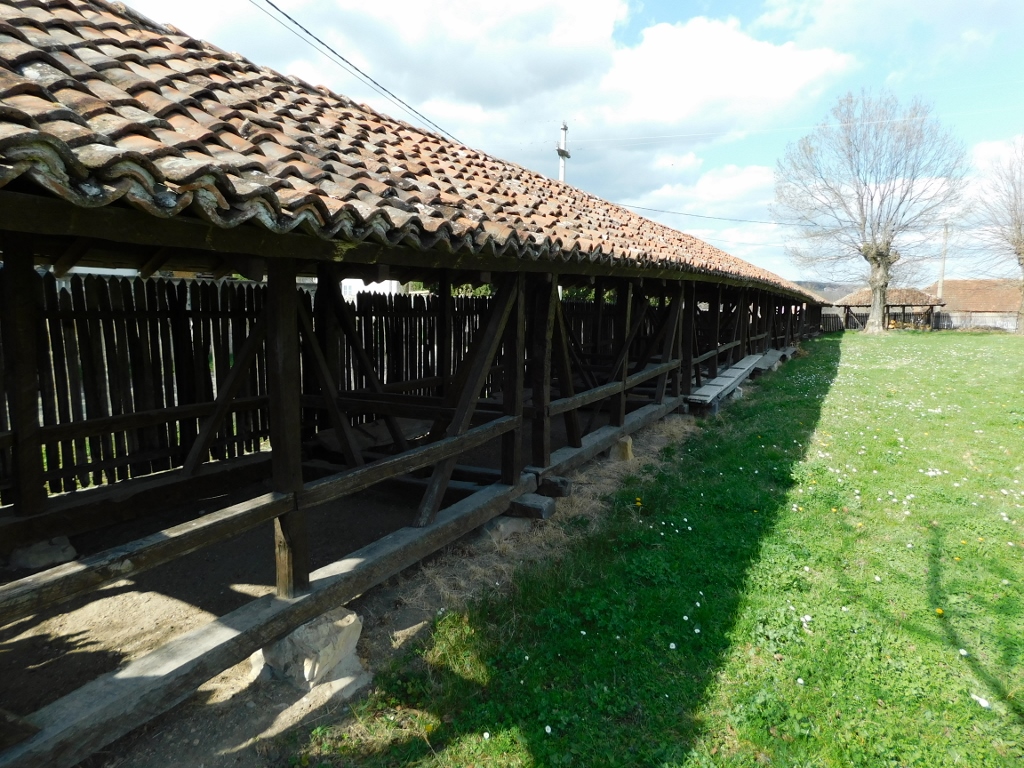 Sobrašice in Lužnice, a detail
Sobrašice in Lužnice, a detail
Each of these “dining halls” was intended for individual households, but the fact that they were under the same roof emphasised the unity and bringing together of the villagers and their guests.
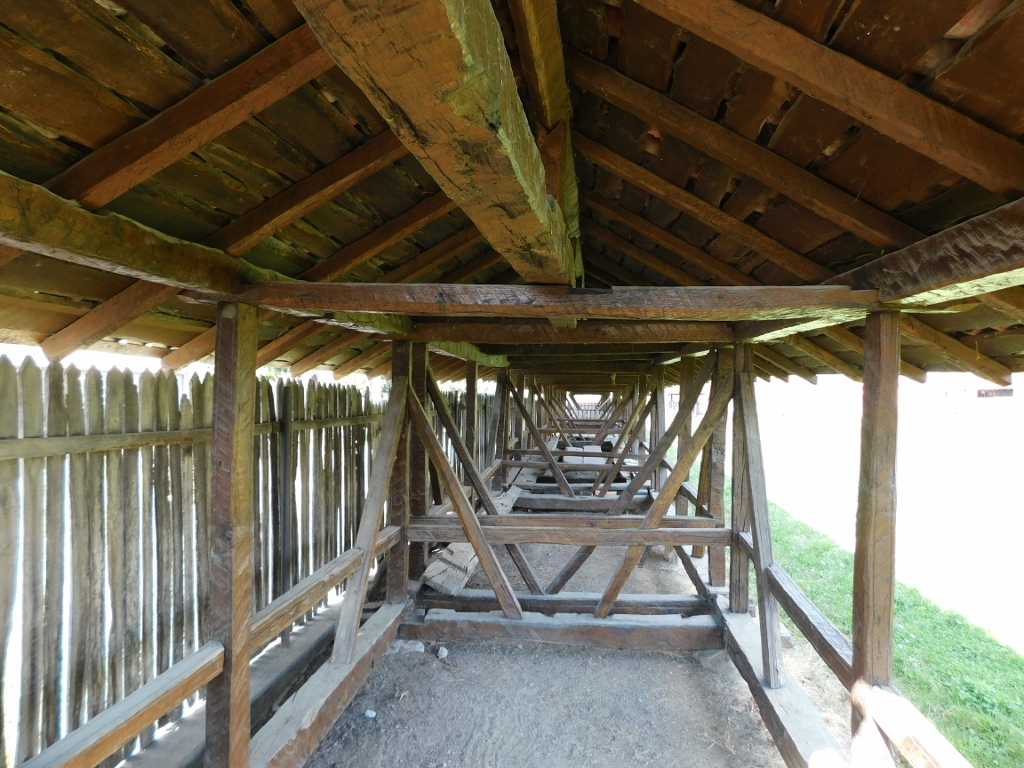 Sobrašice in Lužnice, a detail
Sobrašice in Lužnice, a detail
Some sobrašice have built-in benches and tables, while in others, sofras (low wooden tables) are placed on arched supports for easier seating. An example of this can be seen in the second sobrašica in the row in the following photograph.
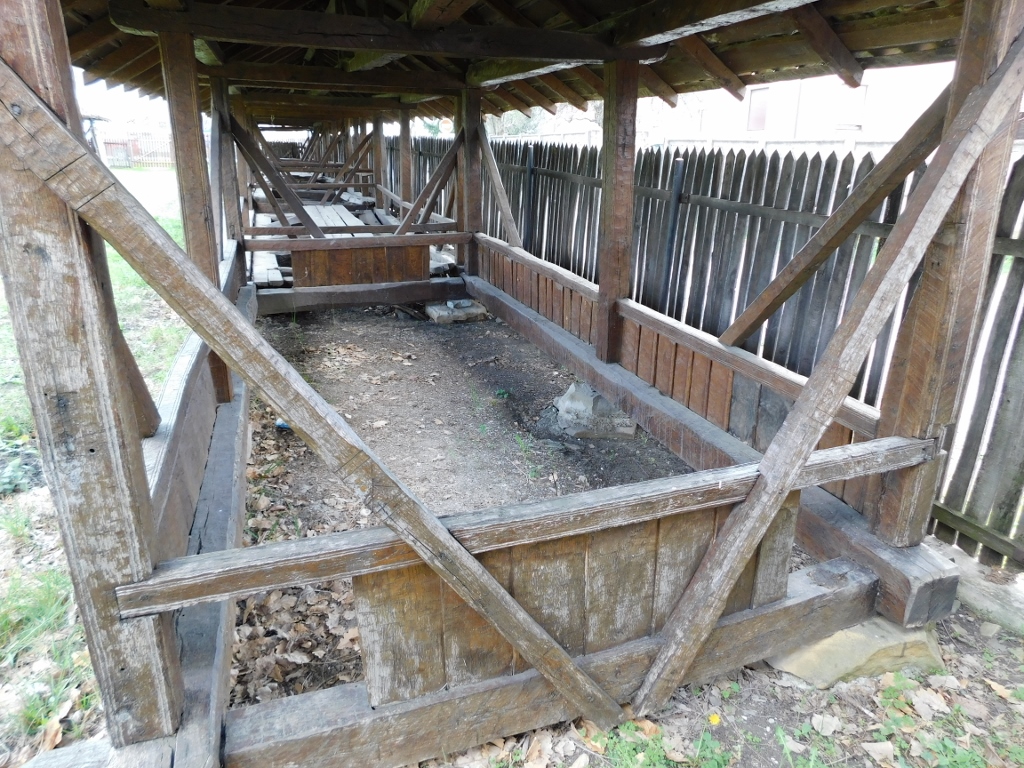 Sobrašice in Lužnice, a detail
Sobrašice in Lužnice, a detail
In the case of sobrašice in Lužnice, examples of both two- and four-sloped roofs can be seen.
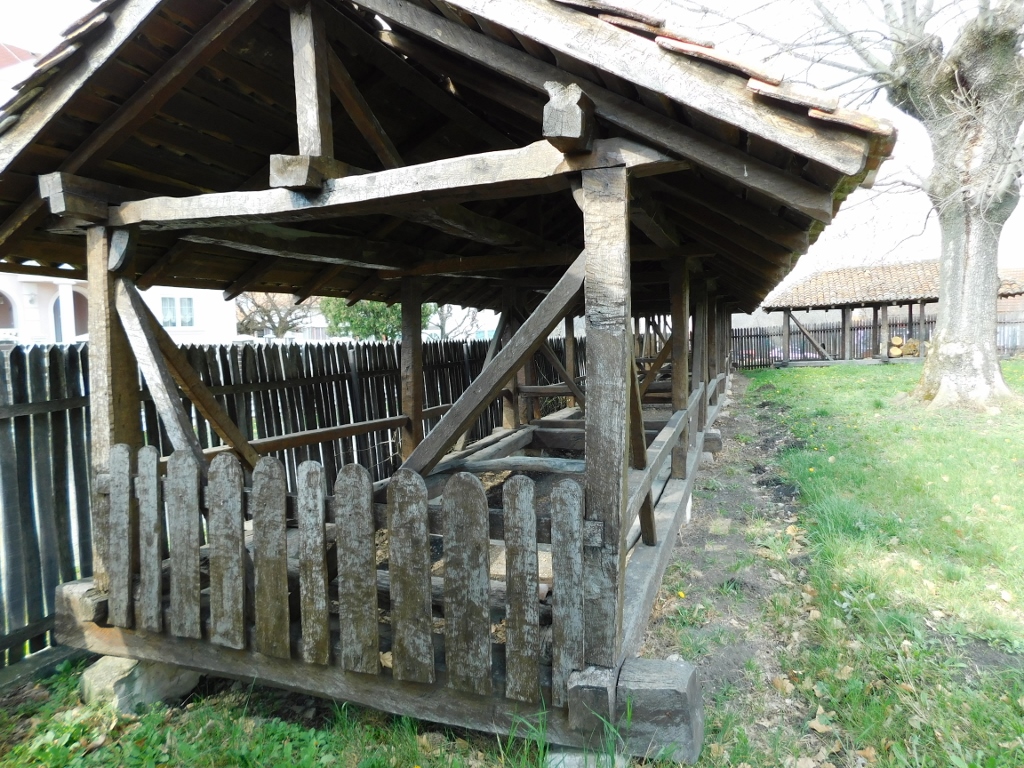 Sobrašice in Lužnice, a detail
Sobrašice in Lužnice, a detail
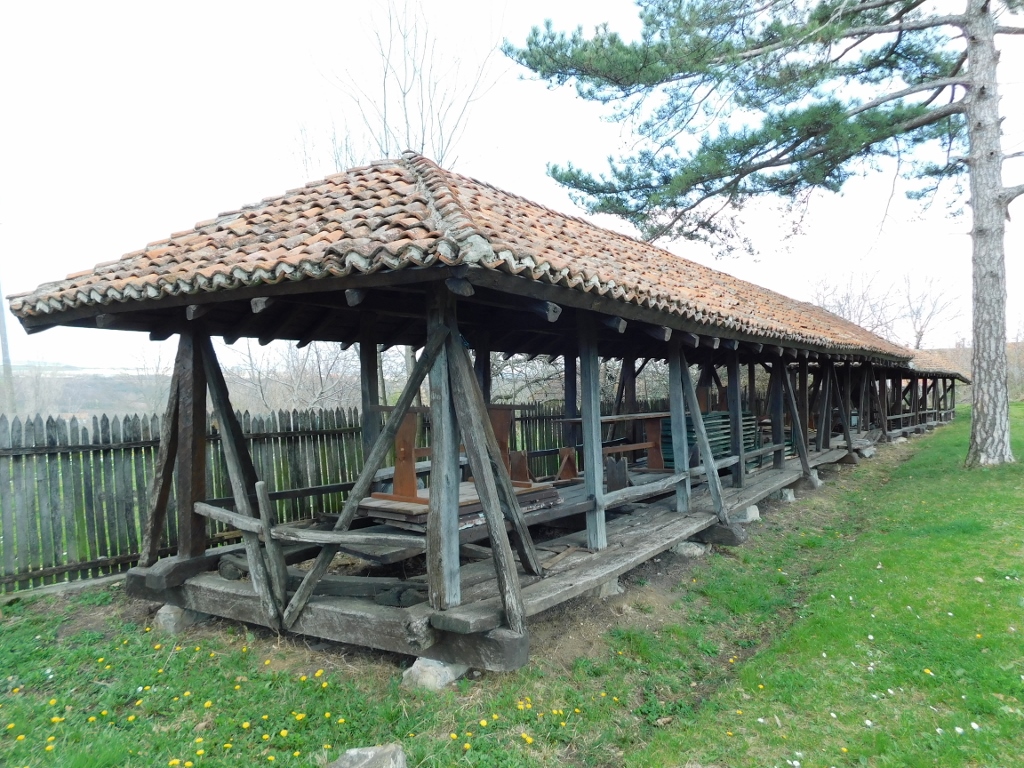 Sobrašice in Lužnice, a detail
Sobrašice in Lužnice, a detail
Such structures were extensively used until WWII, but later they slowly began to lose their purpose and thus fell into disrepair. When I arrived here, I found many cars parked along the main street and loud music was coming from a new building near the church – in other words, some celebration was underway. However, it probably wasn’t a religious celebration, hence the secular nature of the event.
The sobrašice in Lužnice were declared cultural monuments of exceptional importance and protected by law already in 1965, when there were about thirty of them, making their number quite rare in Serbia. One of them has since burned down, while a couple have collapsed.
As I’ve mentioned, the sobrašice are arranged on the inside of the churchyard fence and in the centre of the courtyard, there are a couple of large trees. I also noticed a monument there.
 Churchyard in Lužnice
Churchyard in Lužnice
The monument was erected by the descendants to honour two brothers who died in two different wars – one in the Serbo-Turkish War (1876-1878) and the other in WWI (1914-1918). The first one was 24 years old when he died in 1876 and the second brother was 53 years old when he died in 1915. Yes, that’s Serbia’s history in a few words.
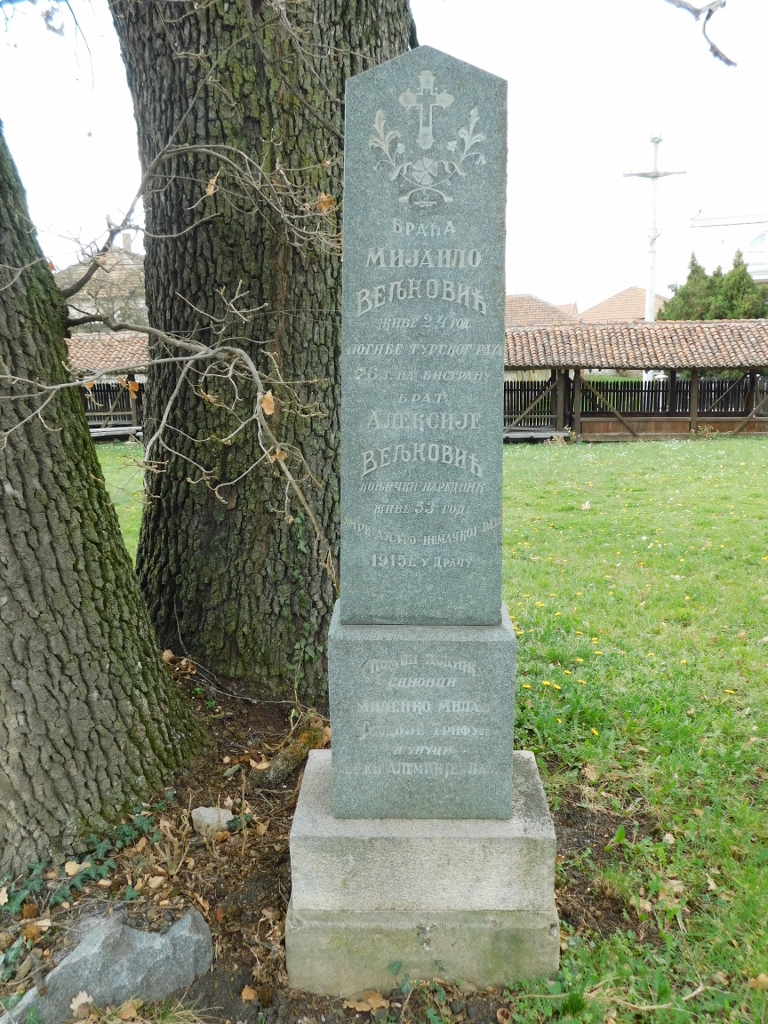 Churchyard in Lužnice, a detail
Churchyard in Lužnice, a detail
I certainly entered the Church of the Assumption of the Theotokos here. By the way, the sobrašice were built shortly after the completion of the church in 1876.
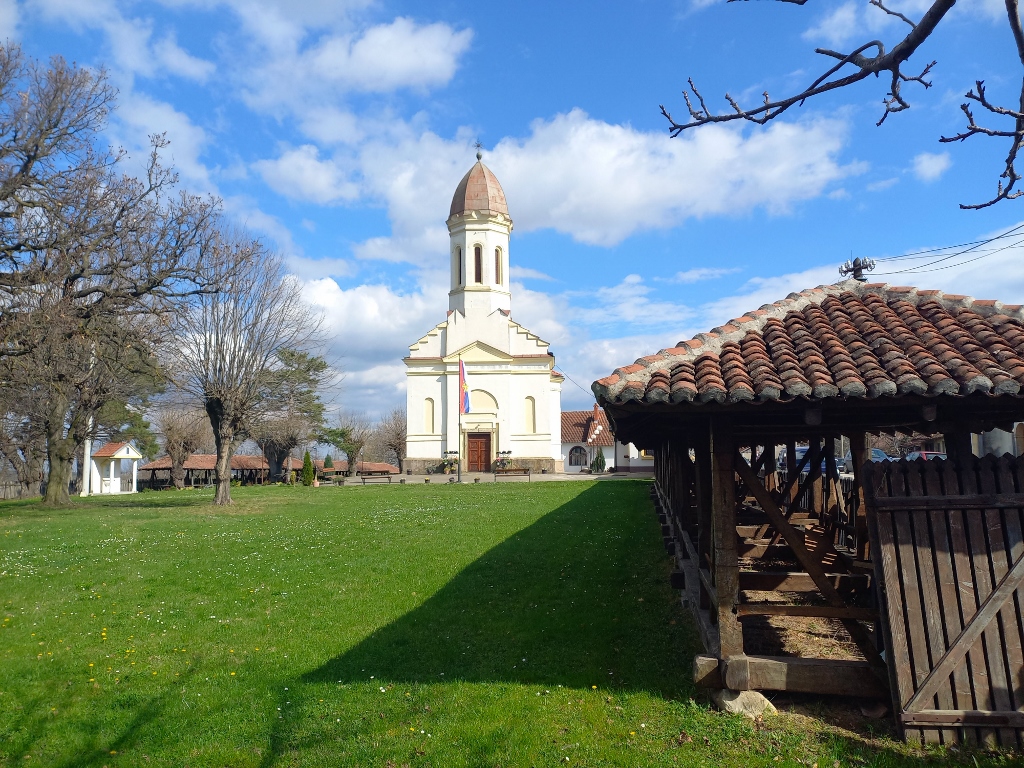 Church of the Assumption of the Theotokos
Church of the Assumption of the Theotokos
In the early spring of 2024, only the altar area and the central space of the church were painted, but I believe that soon the entire interior of the church will be covered with frescoes.
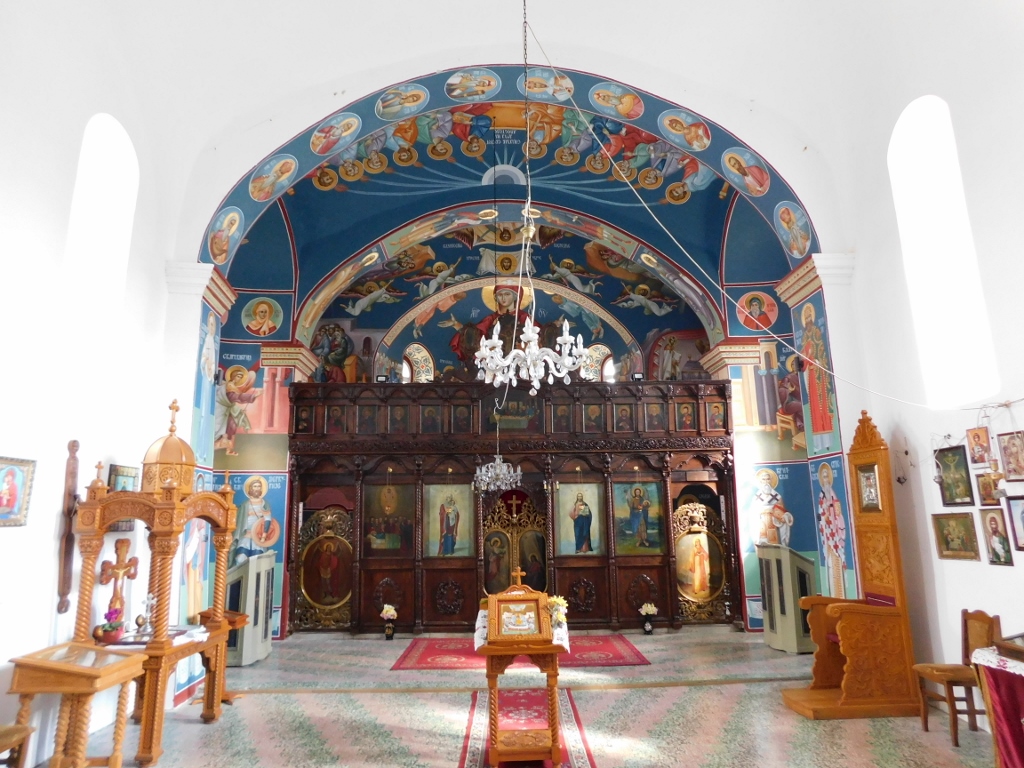 Church of the Assumption of the Theotokos, a detail
Church of the Assumption of the Theotokos, a detail
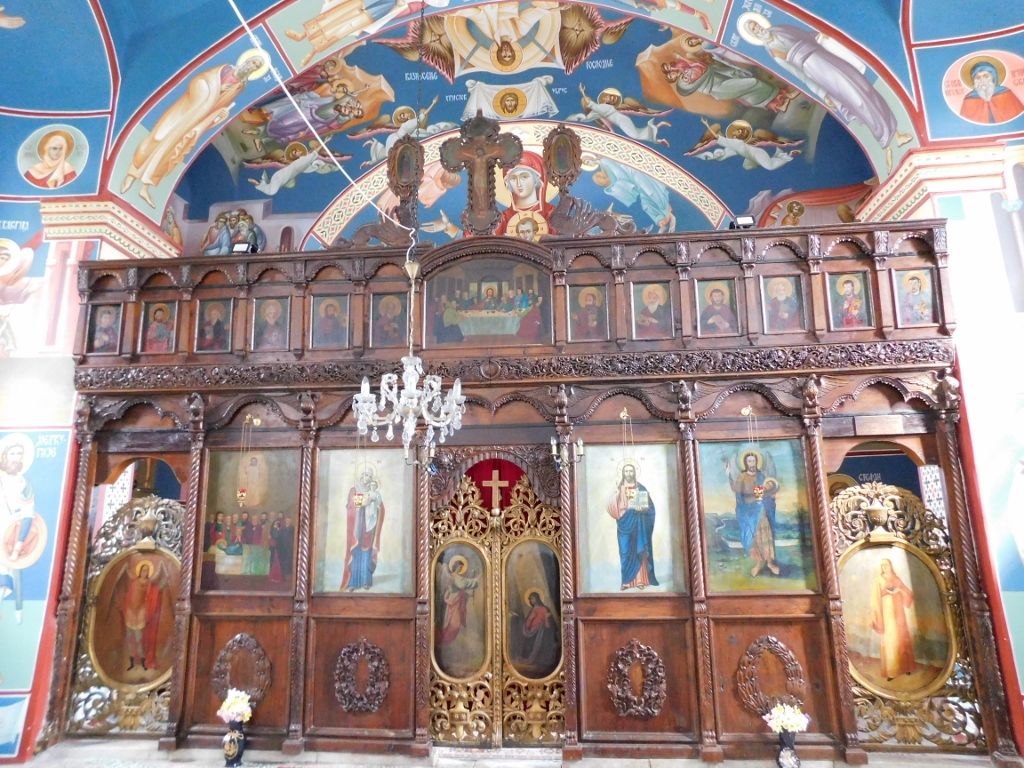 Church of the Assumption of the Theotokos, a detail
Church of the Assumption of the Theotokos, a detail
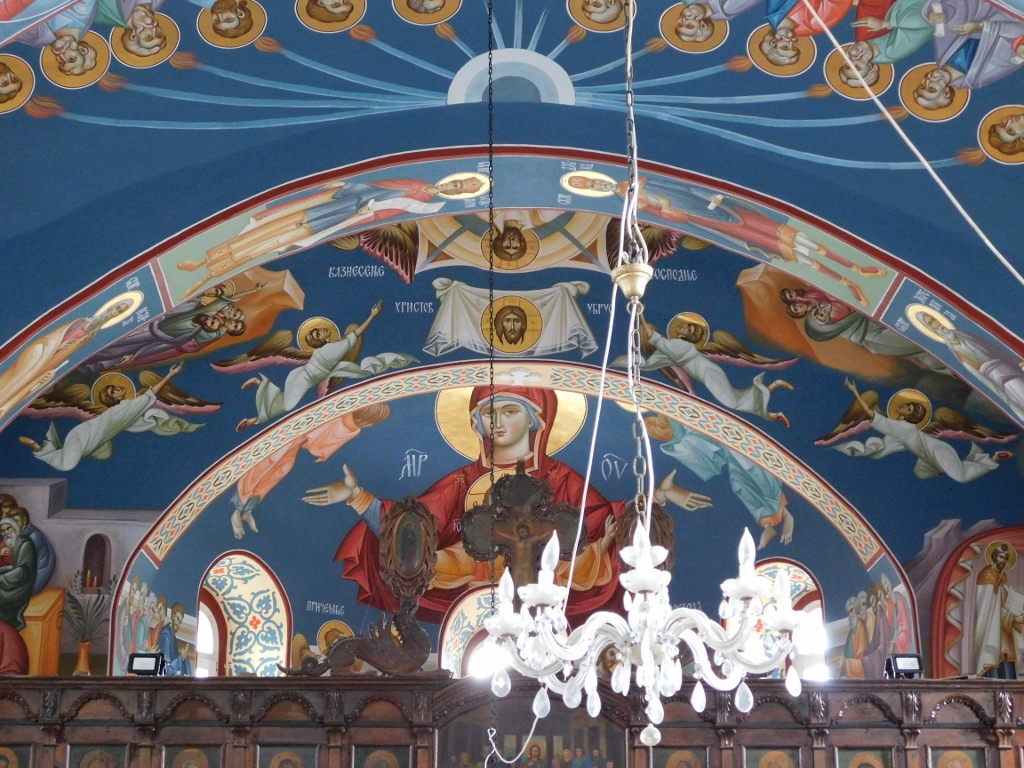 Church of the Assumption of the Theotokos, a detail
Church of the Assumption of the Theotokos, a detail
However, I noticed in particular one painting though labelled as an icon in the text on the image itself. It depicts the Last Supper, but I am not sure who the author is.
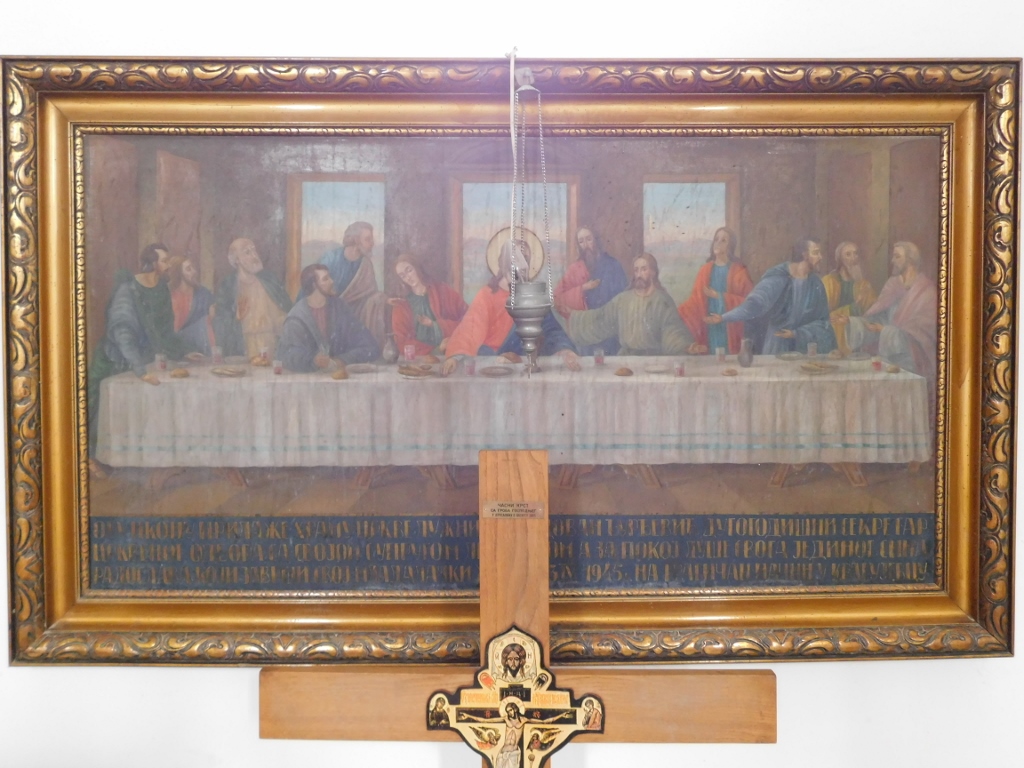 Last Supper from the Church of the Assumption of the Theotokos
Last Supper from the Church of the Assumption of the Theotokos
There is a well-known controversy around the famous version of the Last Supper by Leonardo da Vinci regarding whether the apostle sitting immediately to the right of Jesus Christ is a man or a woman. One argument of those who claim it is a woman is that the figure appears quite feminine. What can be said about this image? It quickly caught my eye that two figures here, the first on Jesus’s right and the second, third on his left, appear quite feminine, even wearing cloaks of the same colour and being the only ones without beards, thus standing out in that way. (By the way, this is not the only example in art where the figures of two apostles are depicted without beards and very young, almost feminine, and there is a perfectly reasonable explanation as for why that makes sense, but that goes beyond the scope of my travel stories.)
As for my visit to the church and the observing of this icon, it is important first to set aside my perhaps silly and overly profane thoughts. The icon is actually a gift to the church that conceals a sad and tragic family fate. Namely, the icon was donated to the church by Radovan Đurđević and his wife Leposava “for the rest of the soul of their only son Radoslav,” who “tragically” ended his young life in Kragujevac in 1945.
This serves as a reminder that we should be mindful of the thoughts that pass through our heads and not allow ourselves to indulge in silly, negative and/or judgmental thoughts. Instead, we should strive to nurture “beautiful” and “noble” thoughts. You never know what lies behind the surface.
With such a life lesson in mind, I was now ready to continue exploring significant and interesting places in the vicinity of Kragujevac.